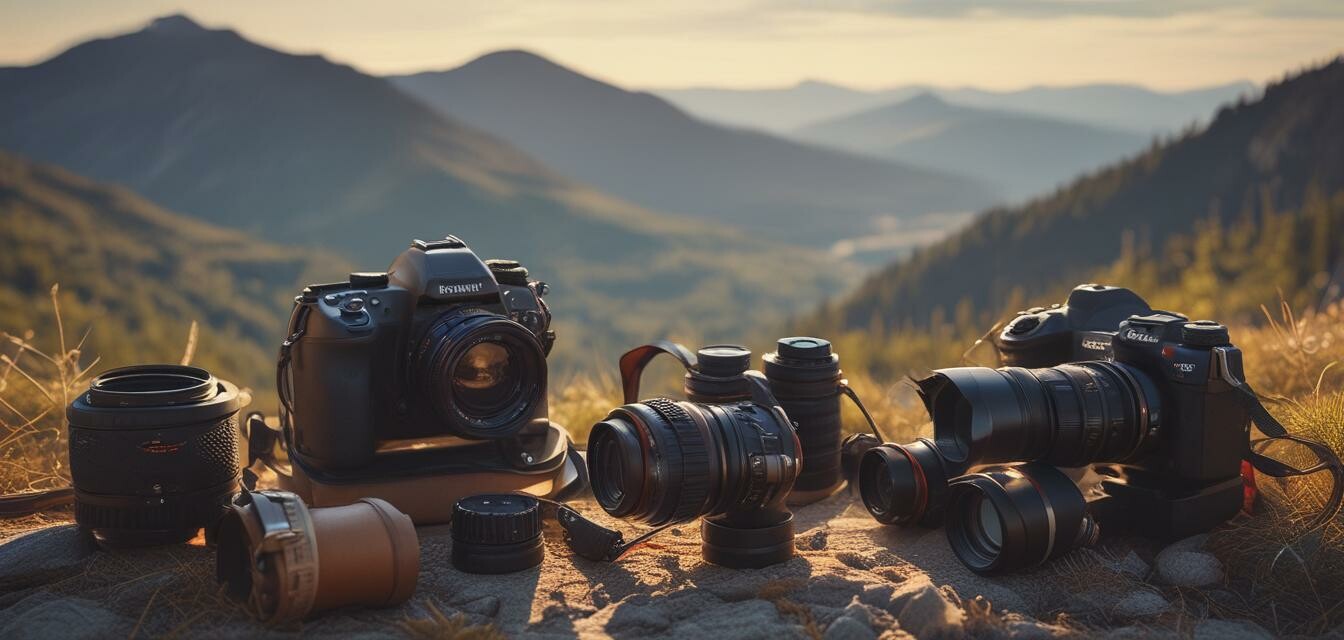
As an Amazon Associate, I earn from any qualifying purchases, at No Extra Cost to You.
Features to look for in outdoor camera gear
Key Takeaways
- Consider durability and weather resistance for outdoor use.
- Evaluate portability and weight, especially for backpacking.
- Look for versatile lens options to adapt to various shooting scenarios.
- Integrated stabilization features can enhance photo quality.
- Battery life is crucial for lengthy outdoor excursions.
Outdoor photography delivers breathtaking moments, allowing you to capture nature at its finest. However, selecting the right camera gear is essential to ensure you have the best possible experience on your backpacking adventures. Quality outdoor camera gear can enhance your skills, making it easier to capture stunning images. In this article, we will explore the key features to consider when choosing camera gear ideal for outdoor settings.
Durability and weather resistance
When hiking through the wilderness, the last thing you want is a fragile camera that can't withstand the elements. Here are some aspects to consider:
- Material: Look for cameras made from sturdy materials that can handle bumps and drops.
- Weather-sealing: Ensure that your gear is weatherproof to resist moisture, dust, and temperature extremes.
Portability and weight
As a backpacker, every ounce counts. When selecting camera gear, consider:
- Size: Compact cameras will make it easier to prioritize space in your backpack.
- Weight: Opt for lightweight lenses and accessories to minimize the load you carry.
Comparison Table: Portability and Weight Features
| Camera Type | Size | Weight |
|---|---|---|
| DSLR | Medium to Large | Heavy |
| Mirrorless | Compact | Lightweight |
| Point and Shoot | Small | Very Light |
Versatile lenses
Choosing the right lens can greatly impact your photography. When considering outdoor camera gear, look for:
- Interchangeable lenses: Allows you to switch between different focal lengths.
- Wide-angle lenses: Ideal for capturing expansive landscapes.
- Telephoto lenses: Great for photographing distant subjects, such as wildlife.
Image stabilization
Outdoor environments can often result in shaky hands or unpredictable movements. Image stabilization technology is a crucial feature:
- Optical stabilization: Reduces blurriness by counteracting camera movement.
- In-body stabilization: Helps to steady the image directly within the camera body.
Battery life
A long-lasting battery is vital for capturing images on extended backcountry trips. Tips to consider include:
- High-capacity batteries: Look for cameras that come with larger batteries that provide extended life.
- Spare batteries: Always have extra batteries on hand for those long hikes.
Related topics to explore
To dive deeper into outdoor photography, check out some of our related articles:
- Choosing the best camera gear for your adventure
- Backpacking camera buying guide
- Latest trends in outdoor photography
- Navigation tools for outdoor photographers
- Latest news in backpacking and outdoor activities
Pros of investing in quality outdoor camera gear
- Enhanced image quality for professional results.
- Durability ensures long-term use in rugged settings.
- Versatile options enable creativity in photography.
Cons of advanced outdoor camera gear
- Higher cost compared to basic models.
- Can be heavier and bulkier if not chosen wisely.
- May require more extensive knowledge to use effectively.
Conclusion
Choosing the right outdoor camera gear is essential for capturing stunning photographs during your backpacking adventures. By prioritizing durability, portability, lens versatility, image stabilization, and battery life, you can enhance your visual storytelling and create lasting memories in nature.
For a successful outdoor photography experience, invest in gear that suits your needs and complements your style. With the right tools, your backpacking adventures will become a treasure trove of breathtaking images!